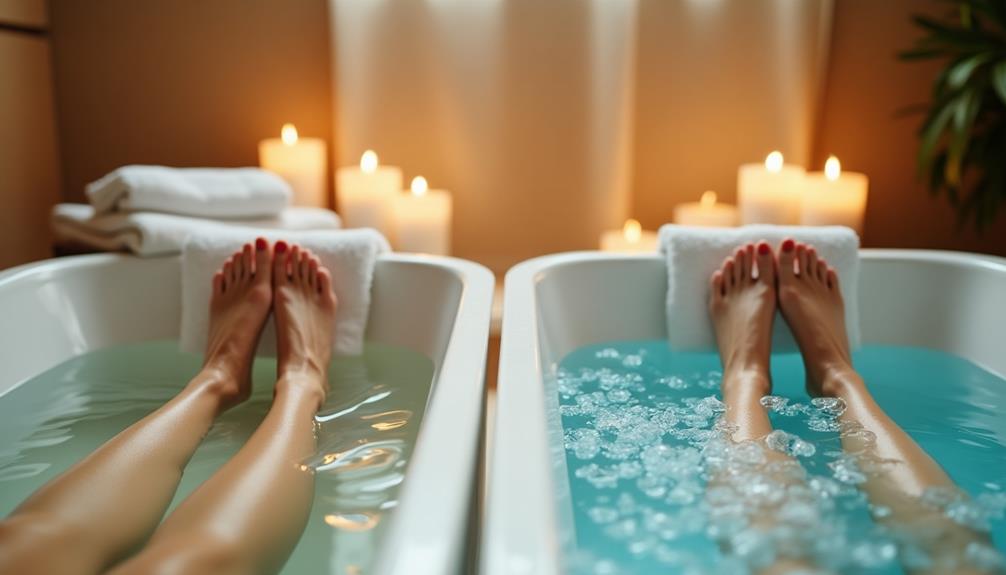Contrast baths can greatly aid muscle repair by alternating between hot and cold water. This process stimulates circulation and reduces inflammation. When you start with hot water, it dilates your blood vessels, enhancing blood flow. Switching to cold water constricts these vessels, which helps decrease swelling. You should repeat this cycle a few times to maximize its benefits. Staying hydrated is essential throughout the process. By incorporating contrast baths into your recovery routine, you promote faster healing and improved flexibility. Interested in more ways to enhance your recovery and performance? There's plenty more you can explore.
Core Insights
- Contrast baths reduce inflammation through alternating hot and cold temperatures, promoting faster muscle recovery.
- Enhanced blood flow from hot water increases oxygen delivery, aiding in muscle repair and growth.
- The cold water phase constricts blood vessels, effectively decreasing swelling and inflammation post-exercise.
- The pump effect from alternating temperatures helps remove metabolic waste from muscles, enhancing recovery.
- Regular use of contrast baths can improve flexibility and overall athletic performance by promoting muscle relaxation.
What Are Contrast Baths?
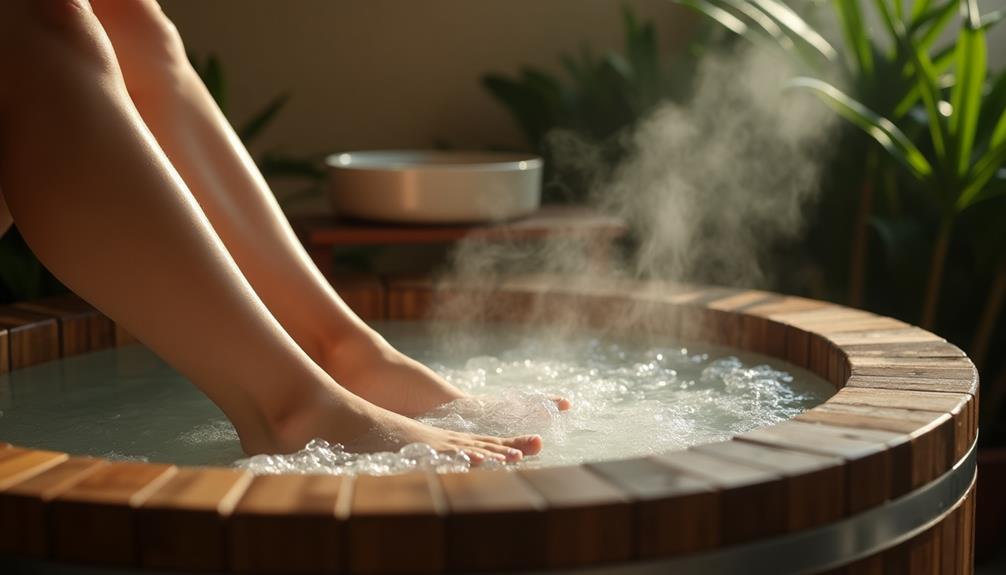
Contrast baths are a therapeutic technique that involves alternating between hot and cold water immersion. This method typically starts with a soak in hot water for several minutes, followed by a quick dip in cold water. You'll repeat this cycle multiple times, usually for about 20 to 30 minutes. Similar to cold therapy compression wraps, contrast baths offer targeted relief and can be particularly beneficial for injury recovery and pain management.
The heat helps to increase blood flow, relax muscles, and reduce stiffness. On the other hand, the cold water immersion constricts blood vessels, decreasing inflammation and numbing pain. This alternating effect can enhance muscle recovery, making it popular among athletes and those recovering from injuries.
Incorporating contrast baths into your routine might help you feel more refreshed and promote quicker healing after intense physical activity.
The Science Behind Contrast Baths

The alternating temperatures in contrast baths trigger specific physiological responses that aid in muscle repair. When you immerse your body in hot water, blood vessels dilate, increasing blood flow. This process delivers essential nutrients and oxygen to your muscles, promoting healing. Then, when you switch to cold water, blood vessels constrict, reducing inflammation and swelling. This cycle of dilation and constriction creates a pump effect, facilitating waste removal from the muscles. For the best hydration during recovery, consider incorporating electrolyte gummies into your post-workout routine to replenish essential minerals lost through sweating.
Moreover, the temperature changes stimulate the nervous system, enhancing your body's recovery processes. You may also experience increased endorphin production, which can help alleviate pain. Understanding these mechanisms can help you appreciate how contrast baths effectively support muscle recovery and improve overall performance.
Benefits of Contrast Baths

- Reduced inflammation: The temperature changes help manage swelling and inflammation, allowing your body to heal faster. Epsom salt baths can also be effective for decreasing inflammation and promoting muscle recovery.
- Improved flexibility: As your muscles relax and recover, you'll notice enhanced flexibility, aiding your performance in future workouts.
- Enhanced oxygen delivery: The circulation boost guarantees better oxygen flow to your muscles, supporting overall recovery and growth.
Incorporating contrast baths into your routine can be a game changer!
How to Perform Contrast Baths
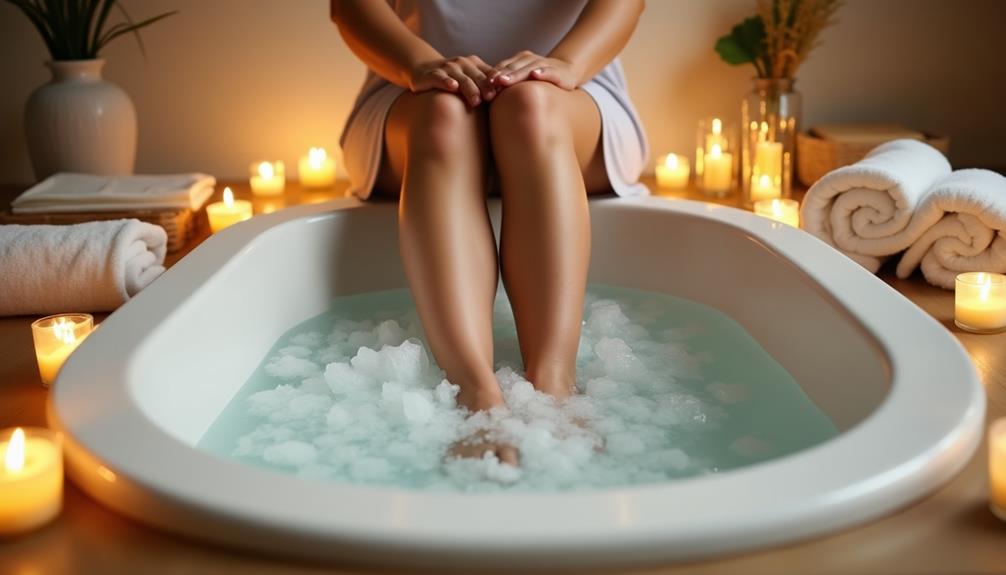
To reap the benefits of contrast baths, start by gathering two tubs: one filled with hot water (around 100-110°F) and the other with cold water (around 50-60°F). Begin by soaking in the hot water for about three to four minutes. This helps to relax your muscles and improve blood flow. After that, switch to the cold water for one to two minutes. The cold water constricts blood vessels, which can reduce inflammation. Repeat this cycle three to four times, ending with cold water to maximize recovery benefits. Make sure to stay hydrated throughout the process, and listen to your body; if you feel uncomfortable, adjust the temperatures or duration as needed. Enjoy the rejuvenating experience!
Best Practices for Recovery
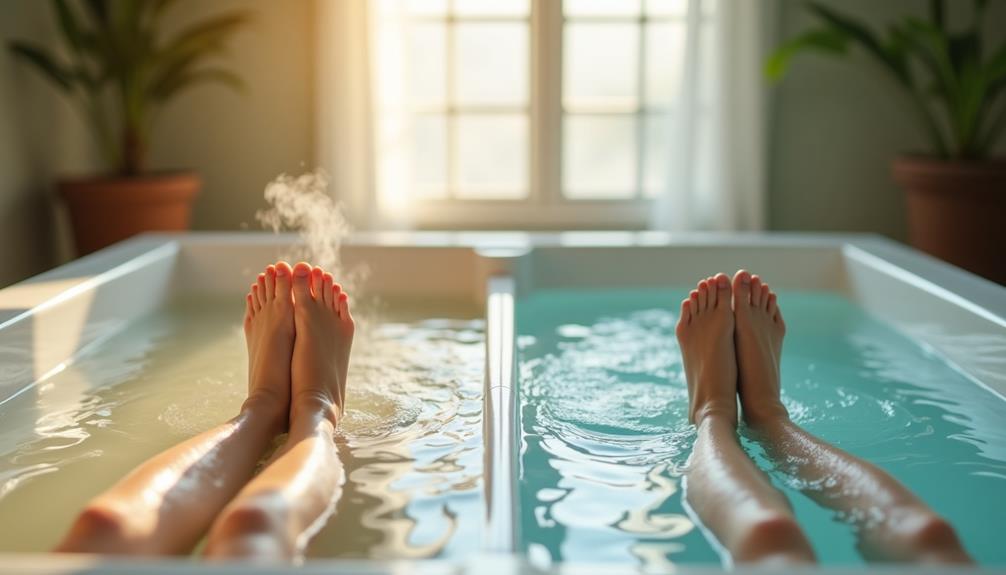
Maximizing recovery involves implementing best practices that support muscle healing and overall wellness. To enhance your recovery process after contrast baths, consider these essential strategies:
- Hydrate Well: Drinking enough water helps flush out toxins and keeps your muscles functioning optimally. Aim for at least half your body weight in ounces daily.
- Stretch Regularly: Gentle stretching post-bath can improve flexibility and reduce muscle stiffness. Incorporate dynamic stretches before workouts and static stretches afterward.
- Prioritize Sleep: Quality sleep is essential for muscle repair. Aim for 7-9 hours of restful sleep each night to allow your body to recover effectively.
Common Mistakes to Avoid
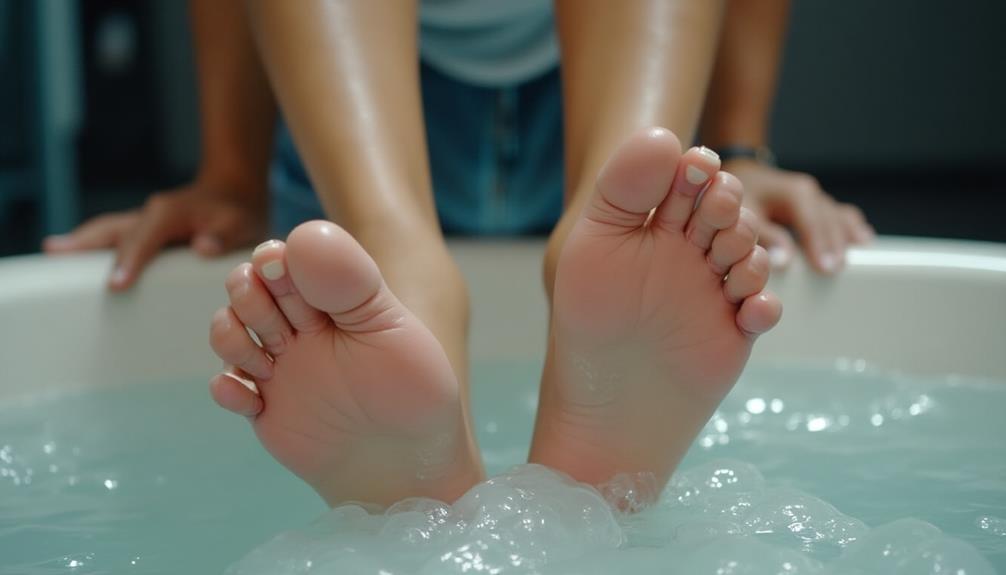
When incorporating contrast baths into your recovery routine, it's important to avoid common pitfalls that can hinder their effectiveness. Here are some mistakes to watch out for:
| Mistake | Explanation |
|---|---|
| Skipping Warm-Up | Always warm up before starting contrast baths. |
| Incorrect Water Temperature | Confirm water is at recommended temperatures. |
| Overdoing the Duration | Limit each bath to 1-2 minutes to prevent fatigue. |
| Ignoring Body Signals | Pay attention to how your body reacts during sessions. |
Frequently Asked Questions
Can Contrast Baths Help With Chronic Pain Conditions?
You might wonder if contrast baths really help with chronic pain. Many people find that alternating temperatures increases circulation and reduces inflammation, potentially easing discomfort. It's worth trying to see if it works for you!
How Often Should I Use Contrast Baths for Recovery?
You should use contrast baths for recovery about two to three times a week. Listen to your body's response and adjust frequency as needed, ensuring you don't overdo it and create more discomfort.
Are Contrast Baths Safe for Everyone?
Contrast baths are generally safe, but you should consult your doctor if you have certain medical conditions like cardiovascular issues or diabetes. Always listen to your body and stop if you feel discomfort.
Can I Combine Contrast Baths With Other Recovery Methods?
Yes, you can combine contrast baths with other recovery methods like stretching, foam rolling, or hydration. Just listen to your body and make sure you're not overdoing it. Balance is key for best recovery.
What Temperature Should the Water Be for Contrast Baths?
For contrast baths, you should use water temperatures around 50-60°F for cold and 100-110°F for hot. Alternating between these temperatures can enhance your recovery and promote better circulation, so give it a try!

